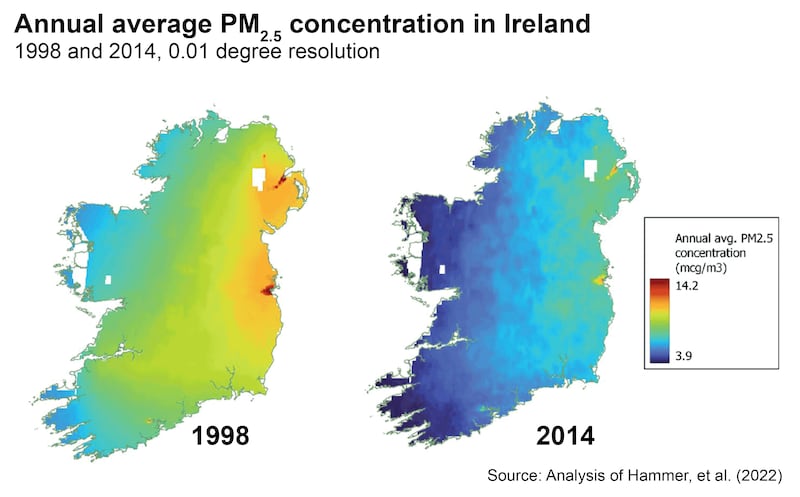Burning solid fuels such as coal, peat and wood for heat over a long period is associated with poorer mental health and wellbeing in older people living in Ireland, Economic and Social Research Institute (ESRI) findings show.
Long-term exposure to one of the most damaging forms of air pollution known as fine particulate matter or PM2.5 can also penetrate a person’s lungs, causing chronic lung disease and cancer.
There is also emerging evidence that these particles may enter the bloodstream and lead to other health conditions, the study found.
Higher annual average PM2.5 levels are significantly associated with higher depression and anxiety, the study co-authors point out.
READ MORE
The study used data on the annual average level of fine particulate matter in 1998-2014 linked to information from the Irish Longitudinal Study on Ageing (Tilda) to investigate the impact on mental health. Tilda is a nationally representative study of people aged 50 and over in Ireland, who are surveyed every two years.
Over the 17-year period the average annual PM2.5 level for Tilda respondents was 7.7 μg/m3 with a range of five to 12, with over half the sample experiencing levels 5-7 μg/m3.
While these levels were low by international standards compared to Poland and Bulgaria, which had annual average levels greater than 25 μg/m3 in 2014, they are above World Health Organisation (WHO) annual guideline levels that have PM2.5 exposure at 5 μg/m3.
The ESRI research also showed that it is possible that different dimensions of mental health may be influenced by the length of exposure or the specific type of pollutant.

No evidence of associations between long-term PM2.5 air pollution and other indicators of mental health and wellbeing such as stress, worry and overall quality of life was identified.
Study co-author Prof Anne Nolan noted that the results add to the body of evidence that suggests that the “health-damaging effects of air pollution can operate at low levels of exposure”.
Prof Nolan explained that the recent Irish Clean Air Strategy commits to the achievement of the WHO air quality guidelines by 2040.
“Hitting this target will require substantial measures to decarbonise home heating, alongside measures to reduce pollution from industry, transport and agriculture,” she said.
The study, entitled Long-term exposure to PM2.5 air pollution and mental health: a retrospective cohort study in Ireland, was carried out as part of a programme of research on environmental socioeconomics, funded by the Environmental Protection Agency (EPA) under their research programme 2021-2030.
- Sign up for push alerts and have the best news, analysis and comment delivered directly to your phone
- Join The Irish Times on WhatsApp and stay up to date
- Listen to our Inside Politics podcast for the best political chat and analysis














